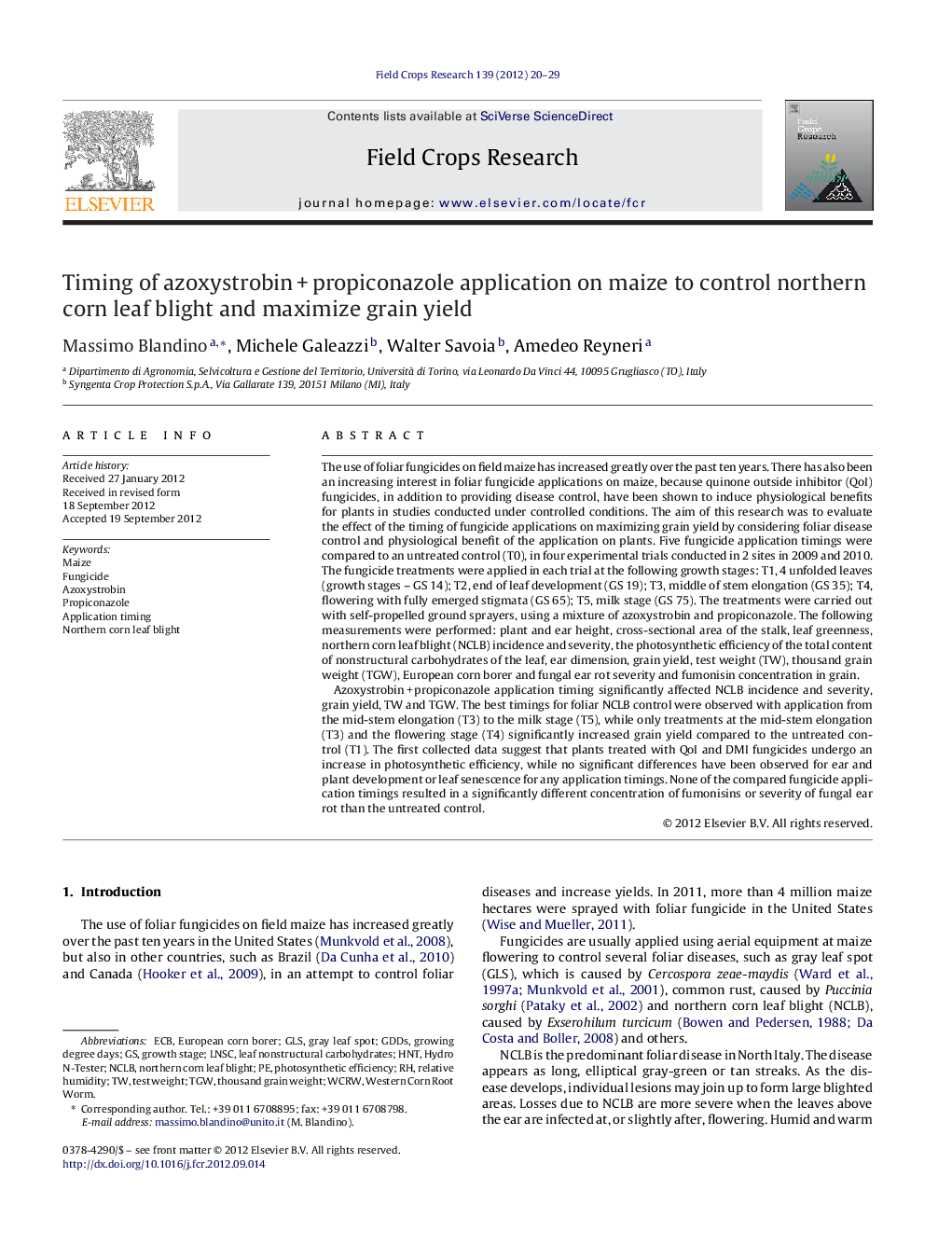| کد مقاله | کد نشریه | سال انتشار | مقاله انگلیسی | نسخه تمام متن |
|---|---|---|---|---|
| 4510381 | 1624724 | 2012 | 10 صفحه PDF | دانلود رایگان |

The use of foliar fungicides on field maize has increased greatly over the past ten years. There has also been an increasing interest in foliar fungicide applications on maize, because quinone outside inhibitor (QoI) fungicides, in addition to providing disease control, have been shown to induce physiological benefits for plants in studies conducted under controlled conditions. The aim of this research was to evaluate the effect of the timing of fungicide applications on maximizing grain yield by considering foliar disease control and physiological benefit of the application on plants. Five fungicide application timings were compared to an untreated control (T0), in four experimental trials conducted in 2 sites in 2009 and 2010. The fungicide treatments were applied in each trial at the following growth stages: T1, 4 unfolded leaves (growth stages – GS 14); T2, end of leaf development (GS 19); T3, middle of stem elongation (GS 35); T4, flowering with fully emerged stigmata (GS 65); T5, milk stage (GS 75). The treatments were carried out with self-propelled ground sprayers, using a mixture of azoxystrobin and propiconazole. The following measurements were performed: plant and ear height, cross-sectional area of the stalk, leaf greenness, northern corn leaf blight (NCLB) incidence and severity, the photosynthetic efficiency of the total content of nonstructural carbohydrates of the leaf, ear dimension, grain yield, test weight (TW), thousand grain weight (TGW), European corn borer and fungal ear rot severity and fumonisin concentration in grain.Azoxystrobin + propiconazole application timing significantly affected NCLB incidence and severity, grain yield, TW and TGW. The best timings for foliar NCLB control were observed with application from the mid-stem elongation (T3) to the milk stage (T5), while only treatments at the mid-stem elongation (T3) and the flowering stage (T4) significantly increased grain yield compared to the untreated control (T1). The first collected data suggest that plants treated with QoI and DMI fungicides undergo an increase in photosynthetic efficiency, while no significant differences have been observed for ear and plant development or leaf senescence for any application timings. None of the compared fungicide application timings resulted in a significantly different concentration of fumonisins or severity of fungal ear rot than the untreated control.
► Treatments from stem elongation to flowering stage significantly increased grain yield.
► Plants treated with fungicides result in an increase in photosynthetic efficiency.
► Fungicide-treated plants show no difference for ear and plant traits or leaf senescence.
► None of the application timings resulted in a change in the fumonisin content.
Journal: Field Crops Research - Volume 139, November–December 2012, Pages 20–29